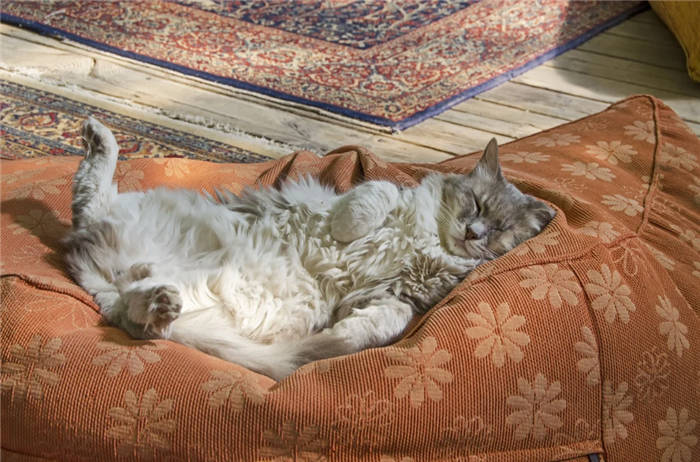On average, cats spend 16 to 20 hours a day sleeping. But they do not stop sending signals to the outside world even during this time. Here are some tips to help you "read" your cat's sleeping postures.
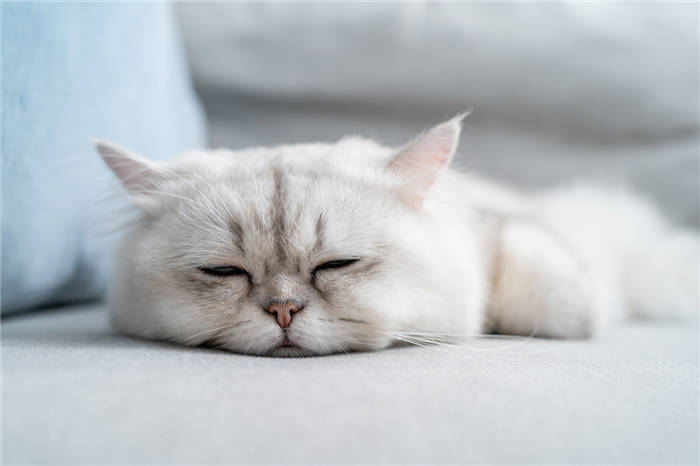
- Do cats dream and why do cats meow in their sleep?
- Sounds
- How do you know if a cat is asleep or not?
- Romantic Dreams
- Awakening
- What do cats dream about?
- How many stages does a cat's sleep have?
- Sleep
- Light sleep.
- Deep Sleep
- Activated Sleep
- Why do kittens twitch more than adult cats?
- "Clutch": I'm calm and comfortable.
- "Burrito: I'm not comfortable.
- Sleep cycles
- Can cats see images?
- Length of a cat's sleep
- Phases of falling asleep
Do cats dream and why do cats meow in their sleep?
Cat owners are well aware of how much sleep their pets need. It gives them strength to feel well, to eat and play all day long. But do cats dream and have nightmares? Why does a cat twitch in its sleep? Any owner wonders if there are funny toy mice dancing around in his sleeping pet's head.
The nature of dreams has been a concern for people for a long time. Even in the time of ancient Greece, great thinkers pondered about the state of sleep in humans and animals, but only in the 1950s did researchers discover and identify in humans the phase of rapid sleep, also called rapid eye movement sleep (REM sleep).
The REM phase, which is the last phase of the cycle, occurs about ninety minutes after falling asleep and lasts from ten minutes to an hour. Since a person's sleep has more than one cycle, the RBD phase can occur several times. It is during this phase that the most vivid dreams occur, because the brain is most active at this time.
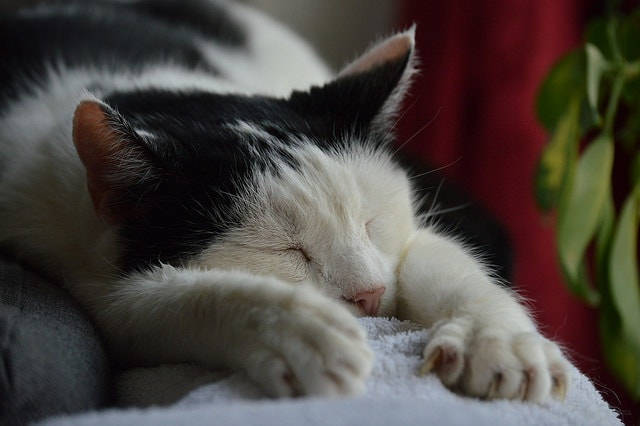
Although there is some empirical evidence that people dream during the REM phase, the answer to why this happens is not so obvious.
Some of the signals sent to the cerebral cortex during sleep are important for learning and memory, while others seem completely random. It is these random signals that can form the basis of the "story" that the cortex tries to interpret or give meaning to, which leads to dreams. People know that dreams can be quite strange and difficult to understand. This is the state of REM sleep.
Humans are not the only mammals that have BDG sleep. In the 1960s, scientists confirmed that cats also go through deep and rapid sleep phases.
Sounds
Cats like to sleep and do so for about twelve to sixteen hours a night.
If a cat wants to nap it will pop down to sleep in any convenient place such as on its owner's lap, on the notebook (if it wants your attention) or in a cozy, sunlit corner. He needs these brief nap breaks to recuperate and restart for the next round of feedings and games.
When owners learn how their furry friend's sleep routine is organized, they find out pretty quickly that deep sleep doesn't always go quietly for the cat. While in the land of dreams, it will twitch, stretch, snore and make strange noises. That's why the cat twitches during sleep. Such physical movements associated with rapid sleep in cats are similar to human sleep behavior.
In 1959, French neuroscientist Michel Jouvet conducted a study on cats in which the "mechanism" of atonia was disabled. Jouvet "altered the cat's brain to disable the mechanism that prevents movement during the rapid sleep phase," writes Liz Langley for National Geographic. During the slow-sleep phase, the animals slept peacefully, and then entering the fast-sleep phase, "the sleeping cats would raise their heads as if watching for unseen objects, arch their backs, and behave as if stalking prey and engaging in a fight."
Although Jouvet was not able to prove what cats dream, he concluded that animals whose movement was impeded by atonia also reacted physically to images that appeared during rapid sleep. This is indicative of the dream state.
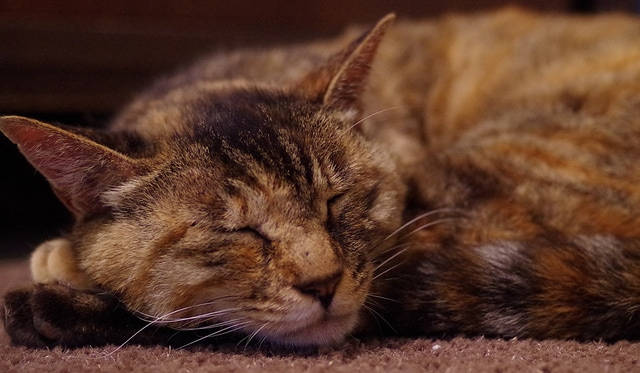
As Jason G. Goldman, in an article for BBC Future, in addition to studying the physical reactions of animals during sleep, "researchers can now look humanely into the electrical and chemical activity of animals' brain cells while they sleep. In their 2007 experiment, MIT scientists Louise Kenway and Matthew Wilson mapped brain cells in the hippocampus, the center of emotion and memory, of mice when they were awake and running through their mazes and then when they were asleep.
How do you know if a cat is asleep or not?
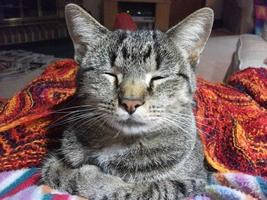
If by putting your hand on your pet you hear it purring, it means that the kitten is not sleeping, but dozing, and that cats can't dream at this time. When your cat's eyes are closed, or the tips of its ears are fluttering or moving, or its tail is twitching nervously, it means that the cat is simply unhappy that you are not letting it rest. Adult animals nap a lot more than they sleep. At this time they are relaxed and at the same time sensitive to the external environment.
Romantic Dreams
Commercials often show cats dreaming about their beloved "Kitty Cat." Such moments are very touching and positive. And you want to think about the fact that your pet does nothing but nourish herself and sleep, seeing in her sleep how she happily devours her favorite treat. Each kitty has its own character, its own habits, and nighttime visions are strictly individual, and it is possible that scientists have not quite correctly interpreted the restless behavior of the animal during sleep. Or maybe the kitty was playfully running around on the lawn with the cat, perhaps figuring out her feelings in a passionate "conversation with her lover."
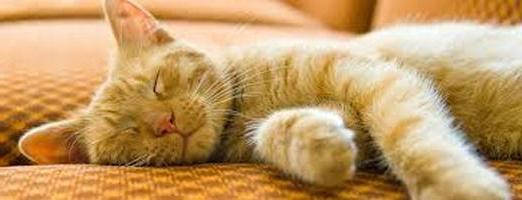
In 1979, French biologist Michel Jouvet was able to solve the mystery of dreaming in animals. During sleep, the brain blocks muscle movements with its special area. The scientist disabled this blocking in experimental cats, thus making them "sleepwalkers". When the animals were sleeping peacefully, they remained motionless, but when the rapid phase of sleep began, they quickly jumped up and began to hunt for a nonexistent enemy, savagely rushing at it, biting, fiercely scratching. However, the pussies did not react at all to the real mouse. Judging by this reaction, we can assume that cats dream the same dream, full of anxiety and worry, joy and disappointment.
If your pet is full and healthy, then her rest will be calm and prolonged. Sweetly yawning, with one paw put forward, the other placed backward, she will lick her graceful body several times, and quietly rest. And we, in turn, looking at her with endless adoration, will think, "Do cats dream, do they not?"
Awakening
All people know how hard it is to dream when you have a nightmare. And we are very grateful to those people who wake us up in time to relieve us of this horror. Cats also have nightmares. Very often these dreams haunt animals whose past has been very difficult. This can even be seen in their behavior. In addition, cats may be sad in their sleep (they meow pitifully, and this meow sounds like a cry or a moan). But it is not advisable to wake them up. It is up to the animal to see how his dream ends. If you wake him up, he will be even more frightened, and the fright will have a negative effect on his health. There are many examples of cats who have been uncontrollable for a while after waking up. He would bite and scratch, look at his owners with frightened eyes and would not allow himself to be approached. After that he was extremely restless in his sleep, and this went on for a long time, as cats spend up to twenty hours sleeping (not even sleeping, but half asleep).
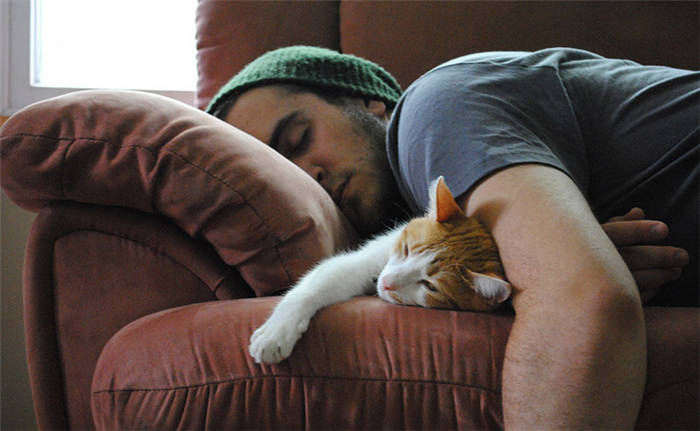
So don't rush to "save" your pet, let him save himself. It's a shame that our pets can't share their experiences. But let's hope that someday scientists will be able to answer all of our questions.
What do cats dream about?
Like humans, cats live through two main stages of sleep. Scientists believe that during the second phase, cats usually have dreams that are related to their daily lives. For example, they may dream about eating or hunting mice, fighting with other pets or going to the bathroom. However, researchers believe that cats are also capable of having nightmares and can wake up from a scary dream. One of the main signs that a cat is dreaming is whiskers and paws twitching and eye movement. What exactly and when cats dream – read in our material.
When an animal is resting, its brain continues to work actively. On average, cats sleep up to 15 to 18 hours a day, leaving six to nine hours for waking. In 1979, scientist Michel Jouvet conducted a rather brutal experiment in which he discovered that when a cat sleeps, it can experience both positive and negative emotions, says zoopsychologist Tatiana Lyubimova.
"When an animal sleeps, a special section of the brain disables the ability to translate the body into motion. Michel Jouvet artificially invaded this program and stopped the disabling of the motor functions of the cat's body to find out if they were dreaming. In his observations Michel Jouvet found that during the rapid phase of deep sleep the kitty showed vidotypic behavior: mainly hunting, but during the rest of the sleep in the same stage the cat remained motionless, "- says zoopsychologist.
As for superficial sleep, it is a kind of half-sleep, and at this time the cat can wake up any rustling. Moreover, regardless of the stage of sleep, cats do not like to be awakened, says Lyubimova.

"Dreams usually replay memories of events that have found an emotional response, related in part to the fact that the associative zones in the brain are activated, which support these memories. One may observe that during a dream, the cat's paws move, as if they were running somewhere, or the vibrissae move. They are replaying events that happened in the recent past. For example, when the cat was playing or defending its territory. Also in dreams, it is very common for desires and needs to be fulfilled. Cats have the same thing. True, their needs are simpler, for example, something tasty in large quantities and availability, "- says zoopsychologist and head of the center of biopsychological research at the Moscow Institute of Psychoanalysis Ivan Khvatov.
How many stages does a cat's sleep have?
On average, cats sleep for 15 hours a day. Sleep is of great value for this kind of animal, and it is always a priority. Rest helps to restore strength, support the immune system and generally ensure good health. Most adult cats have three stages of sleep, kittens have four. Let's talk about them in more detail.
Sleep
This is the lightest, shallowest and shortest type of sleep. At this stage, the cat is very aware of what is going on around him. It may doze off, but its ears always react to sounds and turn toward their source. Modern domesticated cats have inherited the ability to snooze but always be alert from their wild ancestors who used a short nap for quick recuperation.
Light sleep.
In terms of level of consciousness, light sleep lies between slumber and deep sleep. In this stage, cats can still jump up at any time if necessary. The stage lasts an average of 25 minutes, and after that, the cat goes into deep sleep.
Deep Sleep
Deep sleep is also known as the Rapid Eye Movement (REM) stage. It lasts only 5 to 10 minutes at a time, but it is during this time that the body gets maximum rest. During a deep dive, dreams come and it is probably during this period that cats begin to twitch, reacting to what their consciousness is showing them. You may also have noticed that during the rapid eye movement stage, the pet is more difficult to awaken.
By the way, cats are only able to go into a deep sleep if they are comfortable and feel safe. To create these conditions for your pet, it is recommended to arrange his sleeping place on an elevated floor. Sleeping on an elevated cot from the floor allows cats to avoid external stimuli. Then the reaction to sleep will be less disturbing.
Activated Sleep
Kittens have an additional, fourth stage of sleep known as activated sleep. During this, the kitten's nervous system is active, which means that your pet may meow, "cry", wriggle, and twitch more than usual. What a pity for the animal at that moment! And, of course, your first reaction may be to want to wake the kitten up and put him out of his misery. In fact, experts advise against this, since such nervous excitement during sleep is considered the norm and is important for the maturation of the animal's nervous system. Kittens need plenty of rest to replenish the energy they expend while awake, and pulling them out of a very deep sleep should not be done.
Why do kittens twitch more than adult cats?
Again, because of the immaturity of the nervous system. It is active during all stages of sleep in kittens, working hard to create neural connections, as seen in the unconscious movements. The twitching during sleep in kittens is even useful – it is an indicator that their nervous system is developing properly.
Some owners may be alarmed by a cat's restless sleep behavior. Ear movements, paw movements, vocal or sucking sounds There seems to be something wrong with the cat. But experts insist that twitching in your cat's sleep is normal, common behavior for cats. There's no reason to go to the vet unless you notice other disturbing symptoms besides the disturbing sleep, for example:
Provide a comfortable sleeping environment for your pet and leave the cat alone, allowing her to sleep and recuperate. She'll let you know if she's not getting enough or if she's not feeling well in other ways.
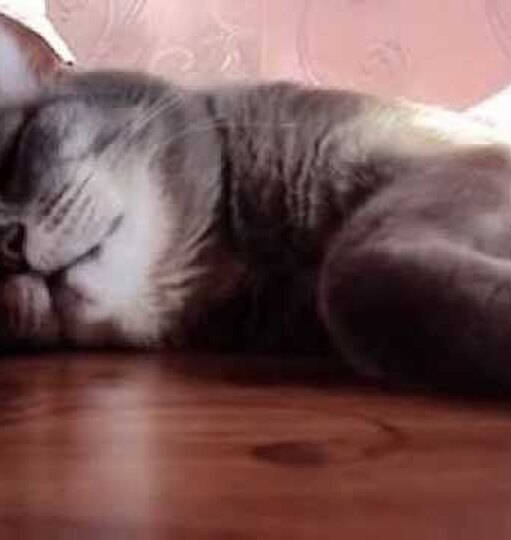
New Hearth online publication
The founder of OOO "Fashion Press": 119435, Moscow, Bolshoi Savvinsky lane, 12, bldg. 6, floor 3, room II;
Editorial address: 119435, Moscow, Bolshoi Savvinsky per. 6, floor 3, room II;
Editor-in-Chief: Rodikova Natalia Aleksandrovna
E-mail address of the editorial office: [email protected]
Editorial office phone number: +7 (495) 252-09-99
The sign of information production: 16+
The online edition is registered by the Federal Service for Supervision of Communications, Information Technology and Mass Media, registration number and date of the decision to register: EL Series No. FS 77 – 84131 of November 09, 2022.
© 2007 – 2023 OOO Fashion Press
When placing materials on the Site, the User freely grants to LLC "Fashion Press" non-exclusive rights to use, reproduce, distribute, create derivative works, as well as to demonstrate materials and make them publicly available.
"Clutch": I'm calm and comfortable.
The pose of a cat curled up in a ball, with its tail covering its paws, means that your pet feels safe. This is the most common sleeping pose not only for domestic cats, but also for the feral feline world. "Clutch" helps to minimize heat loss and ensure a comfortable sleep.
The back position is the most vulnerable of all possible positions. Animals only open access to the abdomen, where the vital organs are located, if they are sure that they are not in danger. From the supine position, it is harder for a cat to get up and jump if necessary. If this is the sleeping position your pet chooses, congratulations: you're in his circle of trust!
"Burrito: I'm not comfortable.
How often do you find your pet buried in a blanket or pillows? Cats like to hide, and if it doesn't happen often, there's nothing to worry about. But if the cat is always looking for a hidden place to sleep, you should think: maybe your cat lacks attention or is afraid.
In this case, it does not matter what position your pet has taken. If he doesn't fully close his eyelids and peeks at you from under his lashes, the cat or cat may be restless. With half-closed eyes the cat doesn't go into a deep sleep phase and dozes off, ready to jump up at any moment. This can often be seen in cats who have recently moved into the family or are experiencing anxiety due to renovations, the arrival of a child in the house or other dramatic changes in the environment.
Sleep cycles
- Rapid sleep phase – the pet may make squeaking noises and twitch its eyes, ears and tail. He also experiences a loss of muscle tone, known as atonia.
- Deep Sleep Eyes – This stage is responsible for the body's recovery. It is important that you do not wake the cat during this phase – provide it with a cozy, quiet and safe place.
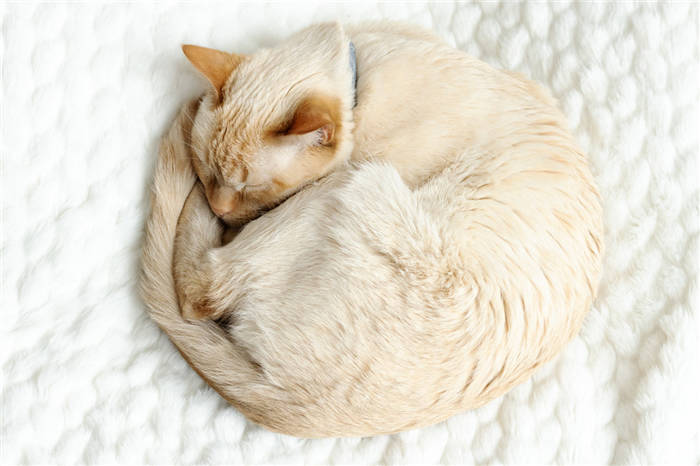
Can cats see images?
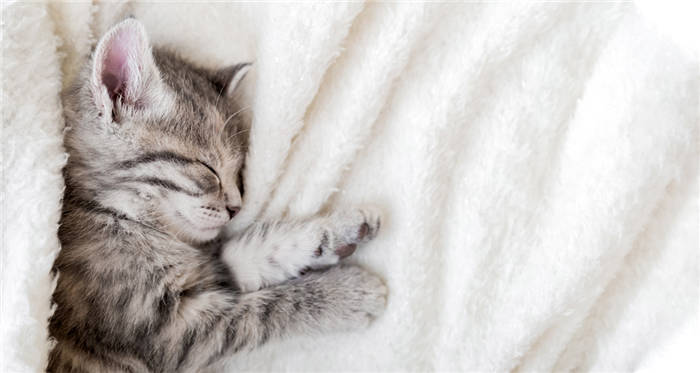
In the 1960s, Michel Jouvet proved that our pets have the same low voltage electrical activity in the brain, tend to twitch their eyes and have a relaxed muscle state – just like humans. Something happens in their brains at night!
Kittens are more likely to have dreams than adults. This may also be because kittens need to learn more about the world around them. And the brain has to process a significant amount of information. Therefore, it receives more signals.
Length of a cat's sleep
The younger the pet, the longer it sleeps. Newborn kittens spend in the realm of Morpheus almost 23 hours a day. They only wake up to be fed.
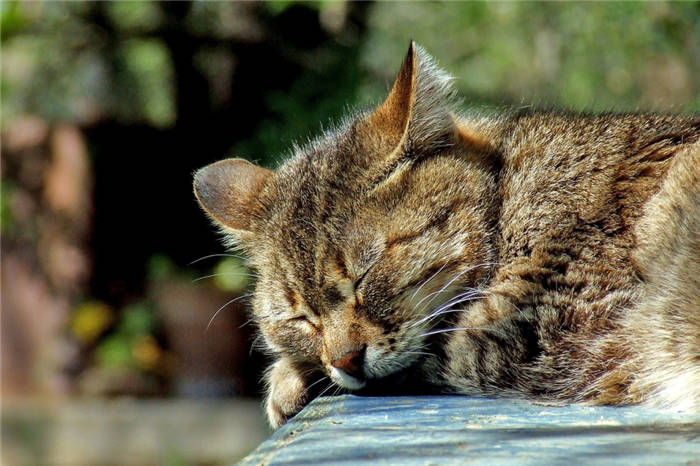
As you grow up, the duration of sleep gradually decreases. By 4-5 months, it is finally synchronized with the average, which is 12-16 hours a day. Another change is observed only in old age, when the animal needs more time to recover.
Phases of falling asleep
Despite the surprisingly long duration of sleep, we cannot say that cats are completely immersed in the world of dreams all this time. Most of the time they remain responsive to stimuli, as can easily be confirmed by the frequent purring of the disturbed sonny.
The activity of the brain and other important organs depends on the phase of falling asleep. As in humans, there are only two of them:
- Quick, or superficial. Necessary to prepare for sleep. It lasts up to 15 minutes. During naps, the animal is tense and sensitive to any rustling. In case of danger, it will easily run away or attack the offender.
- Slow, or deep. The animal is accompanied by complete muscle relaxation and periodic twitching of the tail and whiskers. An animal awakened during this phase needs time to come to its senses.
In humans, most dreams occur in the fast phase. In the slow phase, they are also recorded, but they are always shorter and less emotional.
